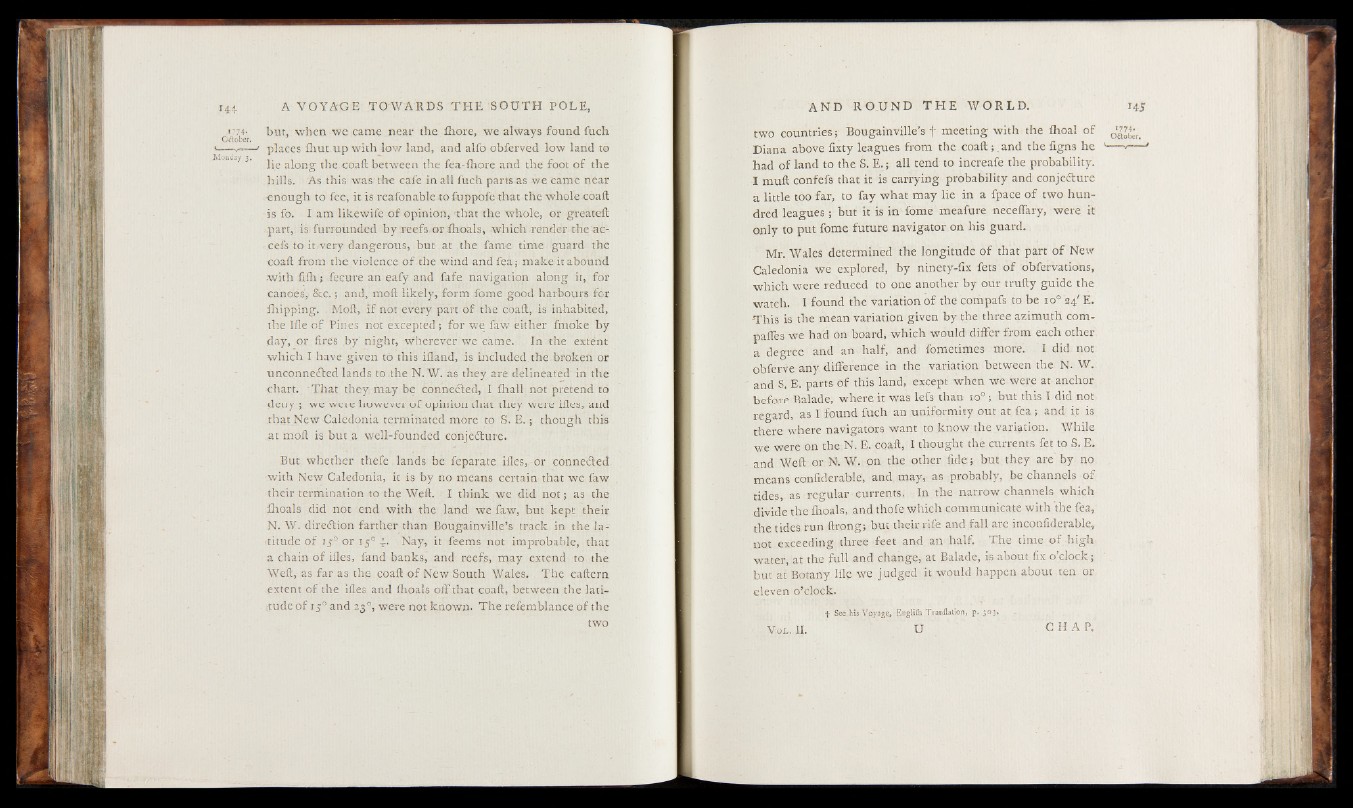
J44
1 ?74* but, when we came near the fihore, we always found fuch
'----v*— ' places fhut up with low land, and alfo obferved low land to
y ’ lie along the coaft between the fea-lhore and the foot of the
hills. As this was the cafe in all fuch parts as we came near
-enough to fee, it is reafonable to fuppofe that the whole coaft
•is fo. I am likewife of opinion, that the whole, or greateft
part, is furrounded by .reefs or fhoals, which render the ac-
cefs to it.very dangerous, but at the fame time guard the
coaft from the violence of the wind and fea; make it abound
■ with fifh; fecure an eafy and fafe navigation along it, for
canoes, & c .; and, moft likely, form fome good harbours for
fhipping. . Moft, if not every part of the coaft, is inhabited,
the Ifle of Pines not excepted; for we faw either fmoke by
day, or fires by night, wherever we came. In the extent
which I have given to this ifland, is included the broken or
unconnected lands to .the N. W. as they are delineated in the
chart. That they may be connected, I fhall not pretend to
deny ; we were however of opinion that they were ifl.es, and
that New Caledonia terminated more to S. E .; though this
at moft is but_a well-founded conjecture.
But whether thefe lands be feparate ifles, or connected
•with New Caledonia, it is by no means certain that we faw
their termination to the Weft. I think we did not; as the
fhoals did not end with the land we faw, but kept their
N. W. direction farther than Bougainville’s track in the latitude
of 15° or.1-5° h Nay, it feems not improbable, that
a chain of ifles, fand banks, and reefs, may extend to the
Weft, as far as the coaft of New South Wales, The eaftern
extent of the ifles and fhoals off that coaft, between the latitude
o f i j° and 23°, were not known. The refemblance of the
two
two countries; Bougainville’s t meeting with the fhoal of
Diana above fixty leagues from the coaft;.and the figns he '--- ■—
had of land to the S. E.; all tend to increafe the probability.
I muft confefs that it is carrying probability and conjecture
a little too far, to fay what may lie in a fpace of two hundred
leagues; but it is in fome meafure neceffary, were it
only to put fome future navigator on his guard.
Mr. Wales determined the longitude of that part of New
Caledonia we explored, by ninety-fix fets of obfervations,
which were reduced to one another by our trufty guide the
watch. I found the variation o f the compafs to be io° 24' E.
This is the mean variation given by the three azimuth compares
we had on board, which would differ from each other
a degree and an half, and fometimes more. I did not
obferve any difference in the variation between the N. W.
and S. E. parts of this land, except when we were at anchor
before Balade, where it was lefs than io°; but this I did not
regard, as I found fuch an uniformity out at fea; and it is
there where navigators want to know the variation. While
we were on the.N. E. coaft, I thought the currents fet to S. E.
and Weft or N. W. on the other fide; but they are by no
means confiderable, and may, as probably, be channels of
tides, as regular currents. In the narrow channels which
divide the fhoals, and thofe which communicate with the fea,
the tides run ftrong; but their rife and fall are inconfiderable,
not exceeding three feet and an half. The time of high
water, at the full and change, at Balade, is about fix o’clock;
but at Botany Ifle we judged it would happen about ten or
eleven o’clock.
f See his Voyage, Englilh Tranflation, p. 3 ° 3*
Vor, II. u CHA P .